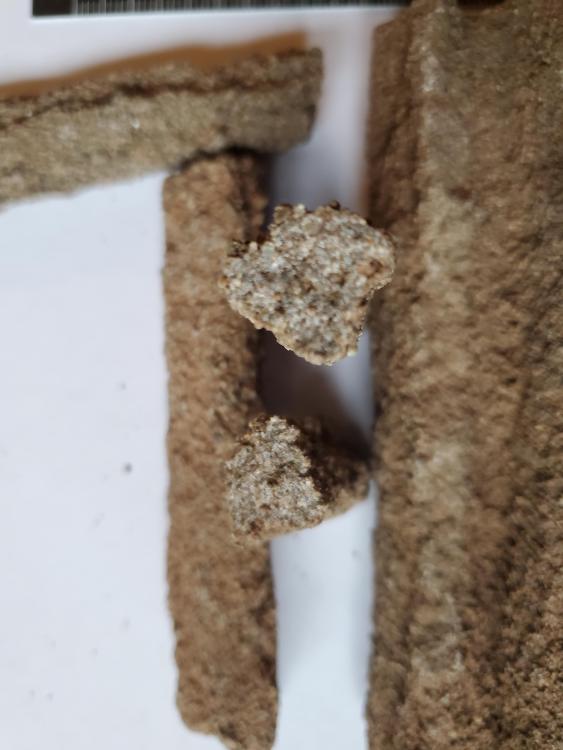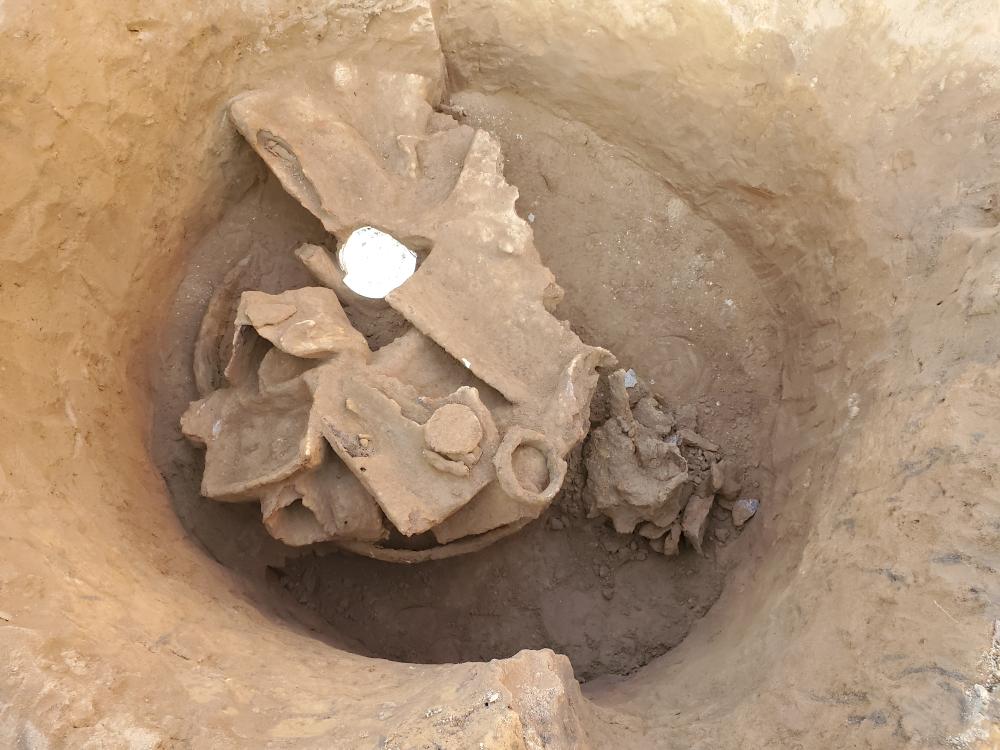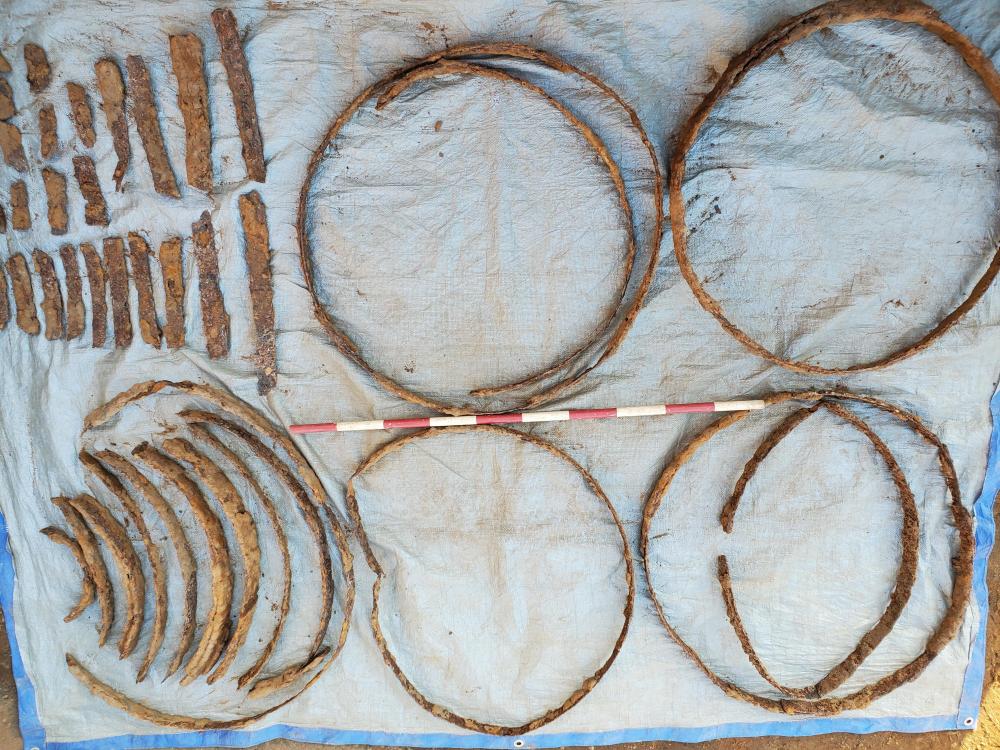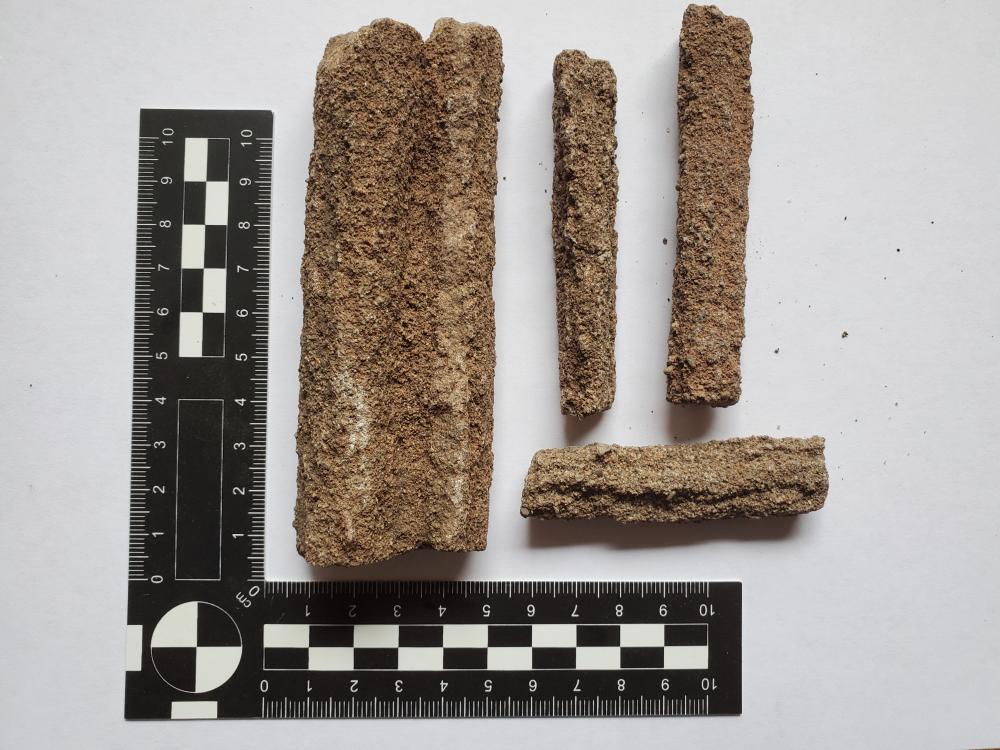
MattyG
Members-
Posts
6 -
Joined
-
Last visited
Profile Information
-
Location
Ontario, Canada
Recent Profile Visitors
The recent visitors block is disabled and is not being shown to other users.
-
Are these a product of 19th century forging processes?
MattyG replied to MattyG's topic in Historical Ironwork
Well haven't you opened a can of worms. By law in Ontario the licenced archaeologist much preserve all artifacts on behalf of the King "in perpertuity." No need to look it up, perpetuity is a really long time. All archaeology companies have storage facilities overflowing with artifacts, most of which ought to just be thrown out. How many sherds of red earthenware do we really need to store? Window glass? Bottle glass? Wire nails? So, while most collections have large quantities of corroded metal stuff in their storage totes, large objects are actually just left in the field. At this site, we recorded the details and simply filled the pit back in, barrel hoops and all. Likely that isn't legal, but storing all that rusty stuff is expensive and, quite frankly, pointless. Different situation for pre-contact artifacts, but most historics should just be recorded, samples photographed and then thrown out. -
Are these a product of 19th century forging processes?
MattyG replied to MattyG's topic in Historical Ironwork
Unlike fulgurites I have seen, and all straight and, well, far too many I think. I didn't suspect them of being metallic, just wondered if there could have been a connection with early forges and forging, given the other feature that may be forge related. We wondered if some waste product of sand casting. But my knowledge of smithing is too low to have dismissed all possibility, so I thought I would reach out to the experts. -
Are these a product of 19th century forging processes?
MattyG replied to MattyG's topic in Historical Ironwork
No, the barrel hoops and the corroded metals were in one deep feature, the sandy rods in another. However, the same rods were recovered in small quantities from other features on the site, though in ones and twos, not an assemblage of hundreds and hundreds. To clarify, the feature with the rods also included other domestic artifacts, though not in great numbers. Given that artifacts are dispersed throughout the site, these artifacts could simply have been present in the sand excavated and replaced as part of burying these rods (as distinct from deposited into the pit as additional waste items). Please do. -
Are these a product of 19th century forging processes?
MattyG replied to MattyG's topic in Historical Ironwork
Attached here is an image of the profile of one of the rods that I broke to show the composition a little clearer. Honestly, it looks like someone epoxied beach sand. I understand that these may have nothing to do with smithing. -
Are these a product of 19th century forging processes?
MattyG replied to MattyG's topic in Historical Ironwork
Hello, thank you all for your responses. The area in question was thought to be a shanty town by the early 1830s when a wealthier individual purchased the land the site is on. He built a fancy house nearby, but his land use etc is unlikely to be related to this site, except that he likely did some agriculture on the land which explains the dispersal of artifacts through the soil column. By 1850 he had sold a small portion and the new owner have built a two story wood framed house. This house stood into the 21st century. The excavation of its foundations revealed they had only an unmortatred (dry set) rubblestone foundation on the north and south walls and none on the east and west. (Crazy). Some time in the 19th century an east and west foundation wall had been installed, of two walls of unmortared (and poorly set) brick. (Yes, also crazy). This house and its yard had the majority of the features we excavated and sectioned. The deeply buried assemblage of corroded metals (pictured below) was located roughly a metre from the former backdoor of this house. This is odd, but the contents of the feature included artifacts with date ranges that skew into the 1850s. Most notable is a portion of a fire brick made by Stephensons in Newcastle. This factory was operating by 1849. The mark on it is not their earliest known, so I am thinking some time in the early 1850s. Given the time required for one of their bricks to be manufactured, transported, used, damaged and discarded, the feature must post-date the building of the house. The soils here are sandy and deep. However, we identified two lots (or layers) in the soil column. The other house in the Study Area, and most of the nearby houses, was built in the early 1860s. All those basements had to have their sandy material go somewhere, and it is possible they were dispersed into the Study Area. This may be the origin of the two lots. There is some distinction in the artifacts recovered from each lot. For example, Lot 2 (the lower lot) contained no wire nails, but did contain wrought nails, including wrought horseshoe nails. Lot 1 had cut nail and some wire nails but no wrought nails. Generally in Ontario, wrought nails date to the 1830s, cut nails from the mid-1830s to 1870s. That's just one example that seems to confirm a period difference between the two lots, even though visually it was often indistinct. The feature with the corroded metals was entirely in Lot 2 and deeper (lot 3, or subsoil). The other important feature, the one with the hundreds of "sandy rods" was on a parcel of land that was sold in the 1860s. The house there is extant, but due to be demolished. The feature lay close to the west wall, maybe 1.5 metres from it. Again, this is oddly close for such a deep feature (1.4m) to have been excavated next to a residence, so it is much more likely to have been dug, used and buried prior to the building of the house. I do not know if the metals in the pit were just iron. My knowledge of grades of steel and how to differentiate them based on corrosion is essentially zero. In the image below, a couple of barrel hoops can be seen underneath, but for the most part they were higher up in the feature and were removed. The second image shows a selection of them. (The white object is a chamber pot.) -
First up, my apologies if this is the wrong subforum to post this in. I am an archaeologist in Ontario, Canada. I was recently excavating an early site in Hamilton. Many of the features we excavated included the artifacts pictured here. One feature included thousands of them. The forms are all rod-like, but of greatly varying thicknesses. Length varies as well. Some are coupled together, as pictured. The texture is as an aggregated of sand or varying grades. When we first encountered them we wondered if we had come across a fulgurite, but these are too uniform and far too common. The site included a large feature which included corroding metals that appeared industrial in character, along with around 24 barrel hoops. Accordingly, we wondered if these maybe related to early 19th century smithing, possibly sand casting. If any of you experts out there can provide any thoughts or suggestions on where to inquire further, much appreciated.



